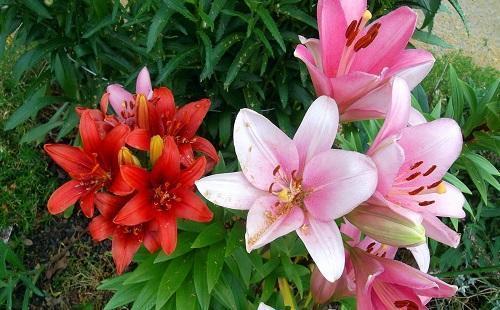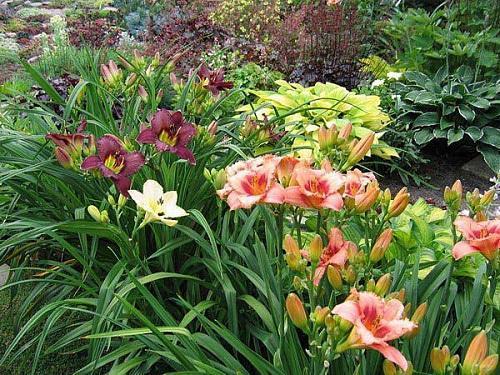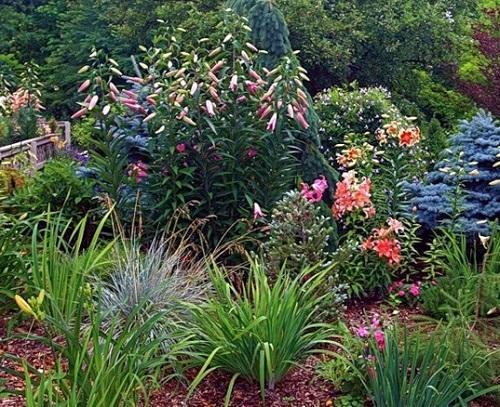Tips for creating a flower bed with lilies and daylilies
Lilies are perennials. In order for them to delight with their flowering and aroma for many years, you need to choose the right place and soil for planting.
Lily planting rules

If the soil is too heavy, you need to dig up an area with the addition of sand or peat... To fertilize clay soil, add humus. It is better to "feed" the area under the flowerbed with fertilizers a month before planting the flowers.
So that the water does not stagnate in the flower bed, and the bulbs do not rot, lilies are planted on flat areas. It is undesirable to grow them on the windy side - the bush may break under gusts of wind.
We must not forget that the fragrant lily is dangerous for people prone to headaches, so it is not recommended to plant it close to home.
Do not plant a lily next to large flowers that coincide with the flowering period, otherwise they will close it. But it is also not advisable to leave her in splendid isolation. After the lily has faded, there should be plants nearby that will cover its ugly empty stem.
A beautiful blooming flower bed will turn out if you plant lilies next to daylilies. Despite the similarity, daylilies differ from lilies in their root system. Lily grows from a bulb, and daylilies have stolon tubers. In addition, the lily is a capricious girl and requires constant care, and the daylily grows and blooms by itself. You just need to take into account that the daylily tends to grow strongly, and over time can drown out the lily. Look at flower hazel grouse!

Breeding methods for lilies
Reproduction by air bulbs.These are small bulbs that grow in the axils of some varieties of lilies. When the bulbs ripen (they will be separated from the main stem without effort), they are planted in a box with loose soil and put in a dark place for the winter. They are transplanted into open ground in the spring. It should be noted that full-fledged bulbs will appear only after 2 years.
Reproduction by young children- daughter bulbs from the bottom of the rhizome. They can be separated at lily transplant... The cultivation method is the same as for air bulbs.
Propagation by bulbs and dividing a large bulb nest.To do this, dig the bulbous nest with a clod of earth so as not to damage the roots. Then carefully pick off all the ground and cut off the stems at a distance of at least 15 cm from the rhizome. Use your hands to carefully separate the bulbs. Cut off old roots completely, and leave healthy ones. If necessary, shorten the old roots to 16-19 cm. Only healthy pink bulbs will be suitable for planting in a permanent place.The daylily is propagated in the same way (by dividing a large rhizome).
Reproduction by scales of bulbs... To do this, select several scales from the main bulb and plant them 2/3 of the height in a container. Cover the box, put it in a warm place, water as needed. When roots appear on the scales, plant them in separate containers and leave until spring at a temperature of 8 degrees. In the spring, plant in open ground and grow for a year or two.
How to care for lilies and daylilies?

The soil around the plants should be loosened up in the spring to retain moisture.In dry weather, they are watered in the evening with warm water.
During flowering and after the lily has faded, watering must be carried out at the root, the leaves cannot be sprayed.
In order for daylilies and lilies to have a brighter color of flowers, they can be fed with mineral fertilizers or mullein.